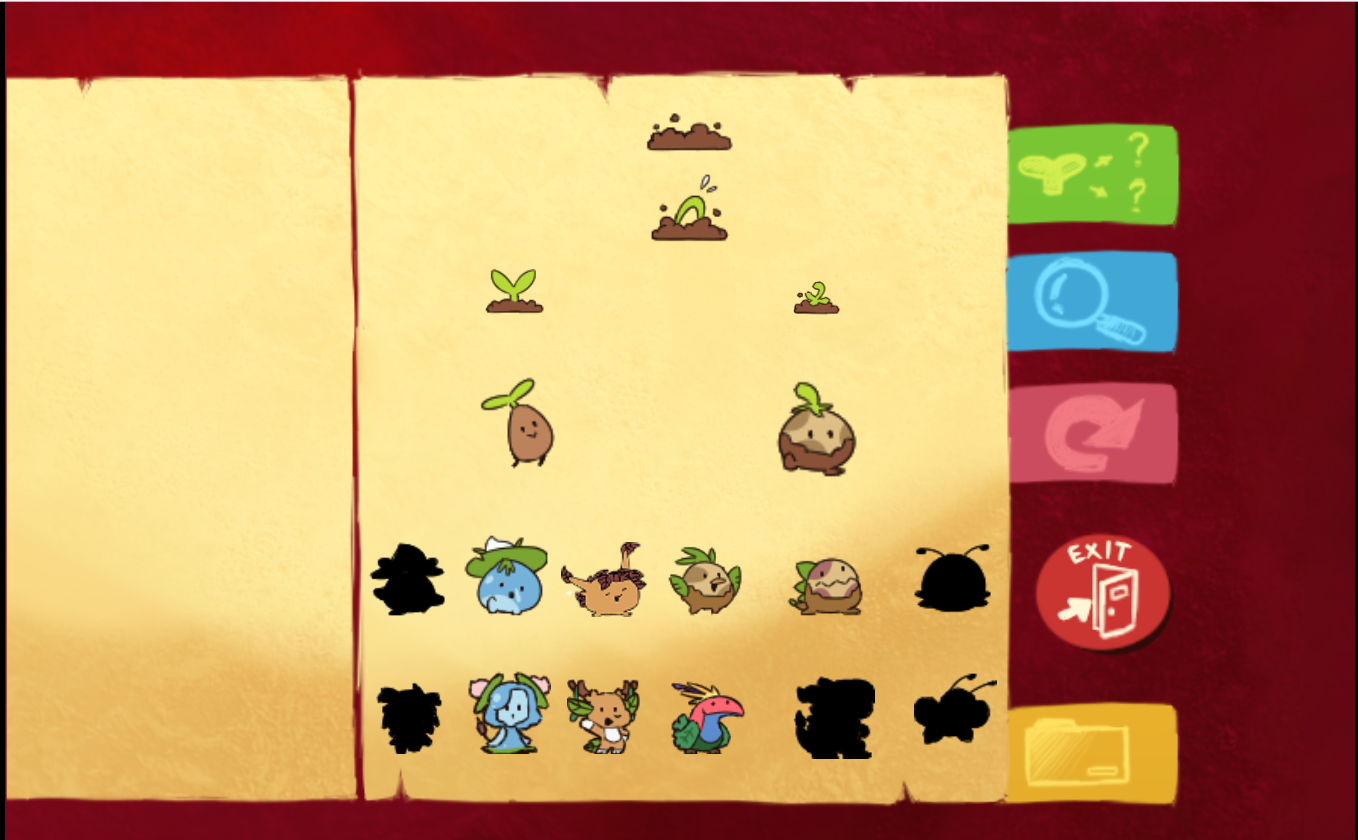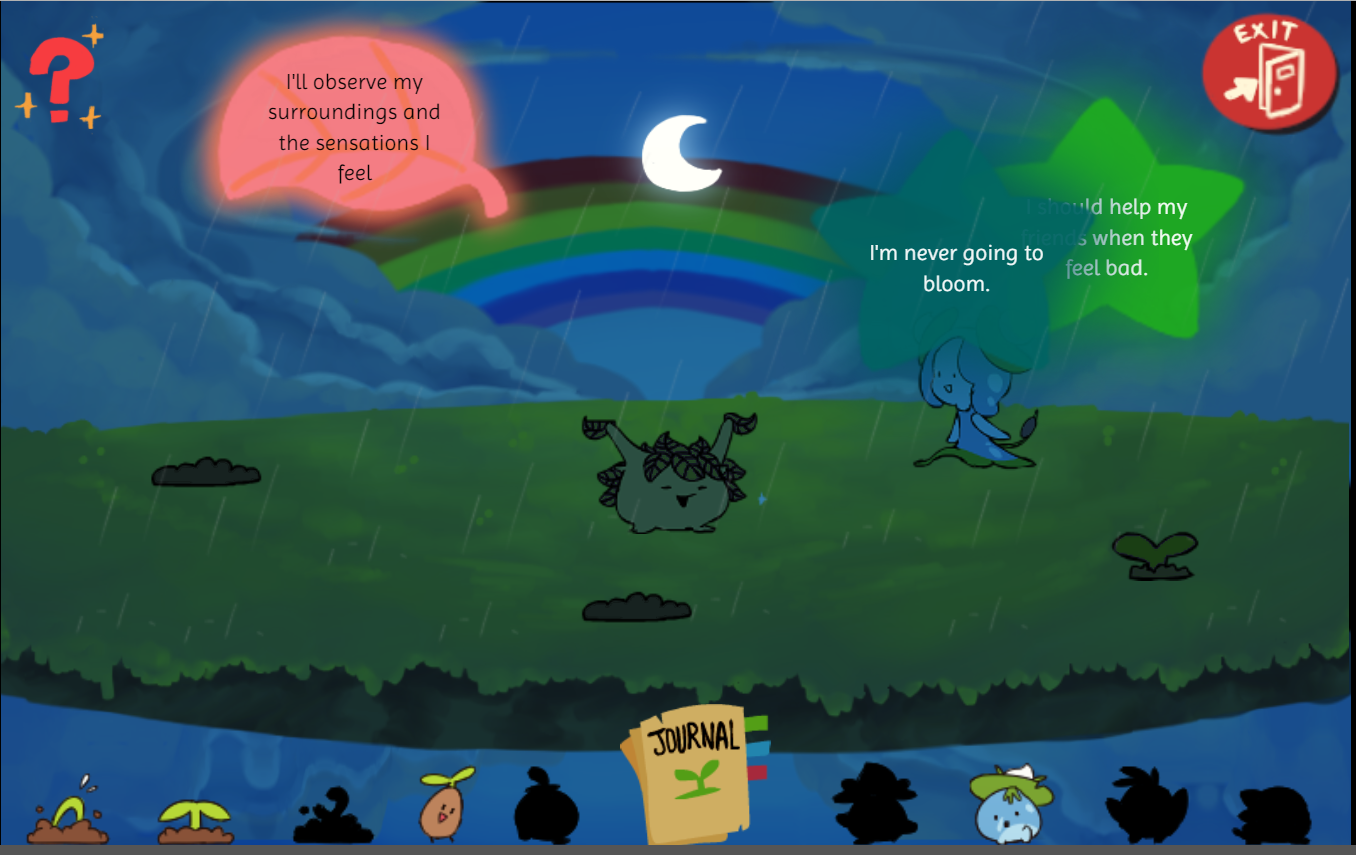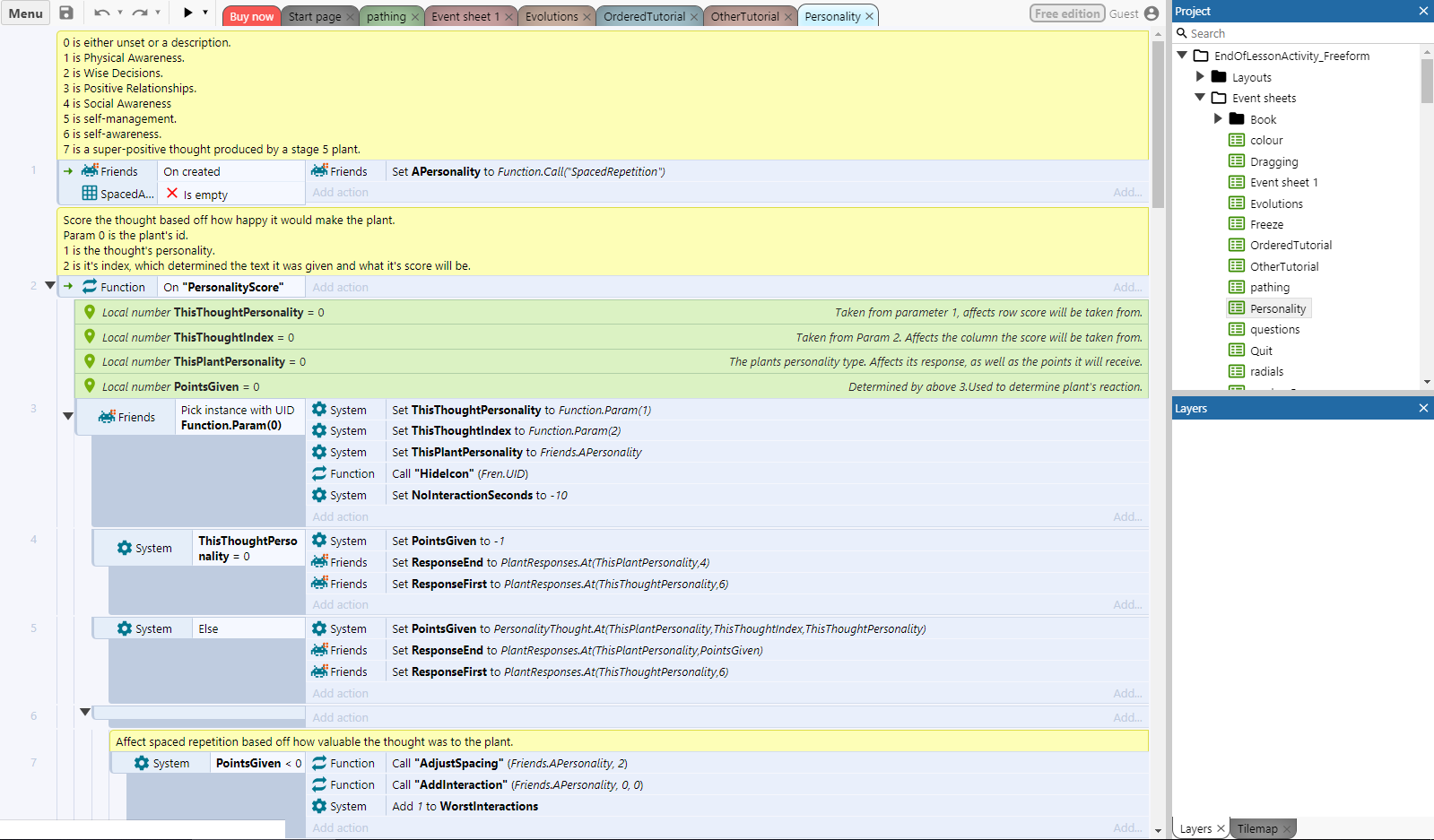The End of Lesson Activity, colloquially known as The Garden, is the area students end up when they finish a lesson. It is designed to be an endless experience that can be played for anywhere between 2 minutes and 10 minutes, and is closer to a toy than a game in its design. It tells the player many things as they play, but holds back key pieces of information until they’re seen, adding a sense of mystery and discovery to the game.
In this game, players are brought into a field that is populated by plants. These plants are all attempting to develop their social skills, and require the player’s guidance to grow them. Tapping on a plant shows what it’s interested in learning, and a small icon acts as a reminder for when the text fades away. A brain, for example, represents a desire to learn about “wise decisions”.
Above the garden, floating in the skies, are thought bubbles. The text in these bubbles corresponds to one of the six subjects that the plants below are asking about.
Dragging a thought to a plant consumes it and helps the plant grow. More points are given based off the relevancy of the thought
When a plant is given enough thoughts, the screen darkens and the plant asks a question. Answering the question causes the plant to evolve to its next stage, changing its form, and normal play resumes..
An example of something that the game doesn’t tell players about is that giving a plants thoughts changes the tint of its leaves over time, meaning every plant will end up looking a bit different.
Another is the weather system. Most weather is randomly chosen, but a rainbow’s probability rises when there are less plants in the garden. The appearance of a rainbow also accelerates the growth of plants to the fifth stage, allowing for the creation of more seeds.
On a more technical note, the game also makes use of spaced repetition, meaning players are more likely to encounter questions on subjects they're doing poorly in, and less likely to get questions from subjects they always get right.
The number and percentage of questions answered is also stored in the game, allowing teachers to have a basic idea of how well their students are doing in learning the different areas.
The plants changing shape over time was planned from before every other mechanic was conceptualised, but the system itself was not finalised until the last few weeks.
Making the game engaging but not overly complicated was a careful balancing act all through production, and went through multiple iterations.
These are the different plant stages, and their core ideas:
Additionally, when a plant reaches this form, it creates new seedlings, allowing for the cycle of birth and growth to continue.
While some mechanics weren't fleshed out to completion, I wanted every single Stage 5 plant to have a specific bonus given to the plant based off it's form, and we wanted each stage to produce thoughts in their own way, the end result rewards players who pay attention to the mechanics and ideas without overly punishing players who don't understand all of the hidden ideas.


